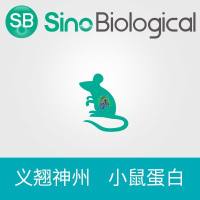The Peroxidase-Antiperoxidase (PAP) Method
互联网
3112
The peroxidase-antiperoxidase (PAP) method was pioneered by Sternberger in 1979 (1 ). The method uses an immunological sandwich amplification and the enzyme peroxidase to effect a signal. The unique feature of this procedure is the enzyme-antibody solution, the PAP immune complex. The horseradish peroxidase enzyme, itself an immunogenic protein, is used to inoculate a given species, and a polyclonal immune response is generated against the enzyme. This antiserum is harvested and placed in solution with the enzyme so that immune complexes form that remain soluble. These complexes form with a molar ratio of two molecules of IgG to three molecules of enzyme. Furthermore, not only does this complex remain soluble, but the enzymatic activity of the peroxidase is not affected by the attached immunoglobulins. The antiperoxidase antibodies are from the same species as that which has produced a primary antibody raised against a tissue antigen. These two antibodies, one directed against the tissue antigen and the other directed against the peroxidase enzyme, can be linked by another antibody raised in an alternate species against immunoglobulin from the first species (see Fig. 1 ).



![B-CPAP [BC-PAP; BCPAP]甲状腺乳头状癌细胞|BCPAP细胞|甲状腺乳头状癌细胞|BCPAP细胞|甲状腺乳头状癌细胞|BCPAP](https://img1.dxycdn.com/2020/0703/473/5770838485445752243-14.jpg!wh200)

![B-CPAP[BC-PAP; BCPAP]人甲状腺癌细胞专用培养基](https://img1.dxycdn.com/2023/0901/786/8805620949915557961-14.jpg!wh200)



